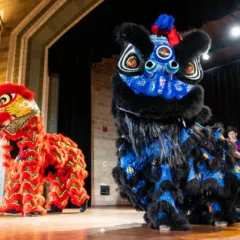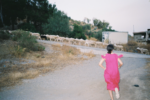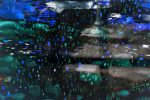Marginal Utility gallery has been taken over by a strange machine. Forever Wild (Nest Machine), by Douglas Irving Repetto, is a slow-moving contraption of conveyor belts which could resemble a Rube Goldberg Machine, a catch-all name for any device that elaborately performs a simple action. Forever Wild’s purpose is to create art, in a naturalistic and random fashion, where the process is as much a part of the piece’s meaning as its final product.
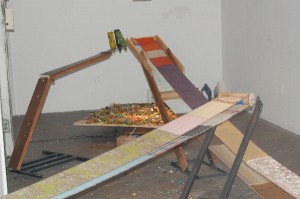
“Forever Wild (Nest Machine) is the first in a series of speculative machines that generate artifacts no longer produced by natural processes,” Repetto writes in his statement accompanying the piece. “It is an inefficient factory built from scraps and debris, making elaborate nests for forgotten creatures.”
Repetto is an artist and teacher who is the director of Columbia University’s Computer Music Center. His previous work in Philadelphia includes a “Monsters!” workshop in September, during which he led a workshop in the Penn Museum in which participants built robot “foals” with scrap wood and simplistic motors. The participants set the “foals” loose to battle one another at the end. Repetto seems interested in using engineering to recreate animal behaviors from the natural world.
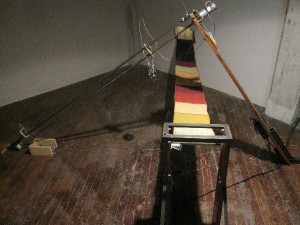
The piece at Marginal Utility is one installation with many components. It occupies two rooms, passing through the wall between them. It is precarious and noisy, with small motors that propel patched-together fabric conveyor belts forward to deliver metal screws, sticks, feathers and other objects toward a rotating platform at the rear of the gallery.
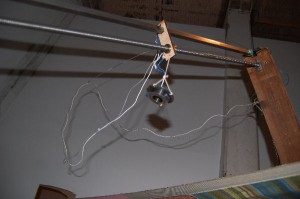
From the entrance, Forever Wild is introduced by the elevating magnetic arm that carries screws from a bucket to the conveyor belt. This first confrontation with an inexplicable device and its contradictory movement backwards out of the room is compelling; already, you’re hooked on the gallery experience.
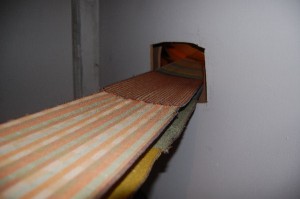
In the next room, where the piece concludes, the initial belt of screws is found delivering its cargo to another longer belt. This second belt carries material from two large water jugs that perpetually spin and dump small pieces of debris on to the belt. One dumper is full of bright objects, the other of dirt and sticks.
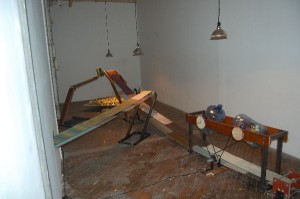
All these sources of material – bright, shiny inorganic objects, metal screws, natural debris – contribute to the final product, a spinning square of randomly assorted elements creating a collage like the messy ground of a forest after a storm. Hung at the final peak of the conveyor belt journey, tubes of ink and wood-glue drip over the board to “paint” a circular outline at the edge of this bizarre nest.
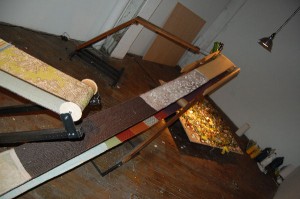
Forever Wild re-imagines the random, natural process of nest-building over the background of an artificial world where the plastic, gaudy and unrecyclable materials of our society are part of the geological record, and animals no longer roam.
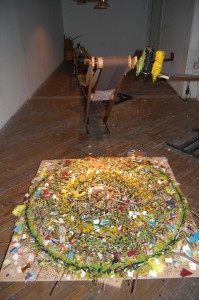
But for whom is this nest meaningful? Repetto’s machine is too willed of a creation to seem purely natural. It’s not like the instinctually-constructed nest of a bird the way a bird would build it. And unlike the endlessly-repeating cycles in nature (migration, mating, nest building, etc), the machine makes no pretense to infinite operation. There are no bags of additional supplies in the corners of the gallery. To understand the meanings at play in this work, it might be fruitful to explore the idea of the “forgotten creature” for whom the plastic and garbage nest is intended.
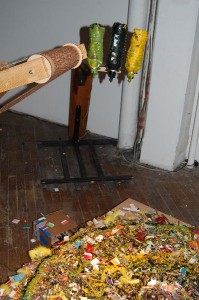
Ultimately, Forever Wild reflects an abstracted human need for the organic, arbitrary layering patterns that we see undertaken in nature. The work is successful mechanically, but much of the excitement in it comes from the almost child-like wonder inspired by the elaborate twists and angles of Repetto’s machine. Repeated views after the work has been comprehended are no longer elevating, and the nest is just a nest. As the initial root of a project that the artist intends to expand, however, Forever Wild is a very strong and promising step into intriguing territory.
Douglas Irving Repetto’s Forever Wild (Nest machine) will be installed at Marginal Utility through January 20.


